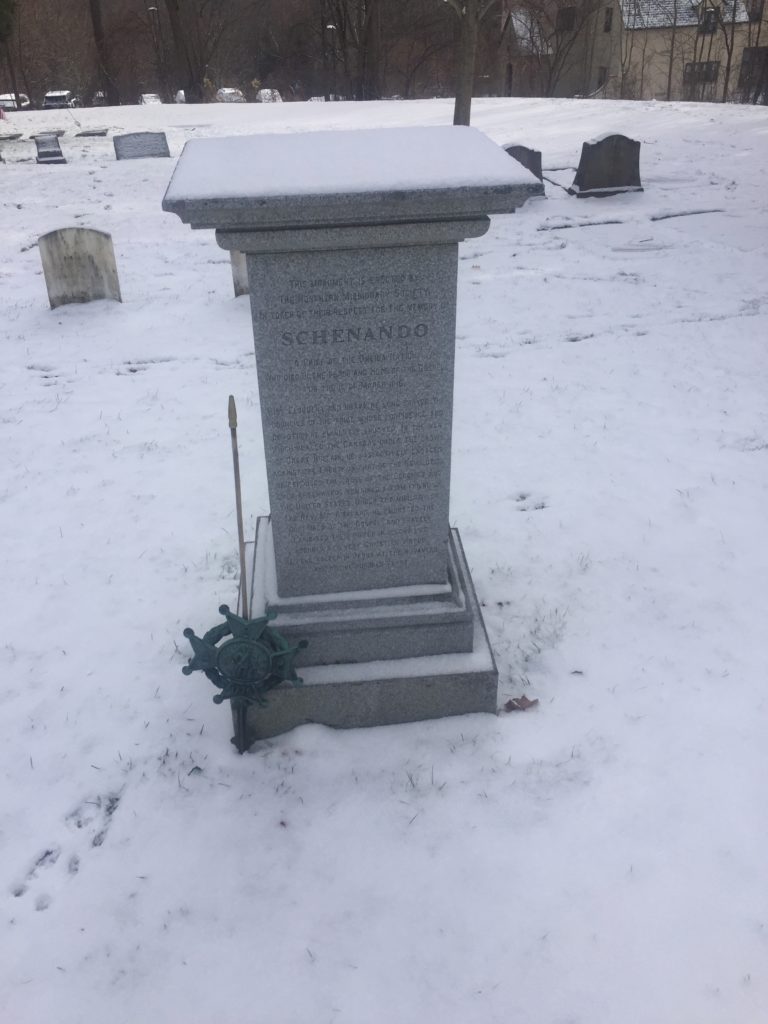Erik Visits an American Grave, Part 611
This is the grave of Schenando.

Supposedly born in approximately 1706, at least according to legend, Schenando, also called Skenandoa or Shenandoah, was a chief of the Oneida. He was born into the Susquehannocks, but later was adopted by the Oneida. A huge man for his time, around 6 feet, 5 inches according to many accounts, he was really just one of many Oneida tribal leaders. It was Europeans who placed constructions of “the chief” on the tribes, seeking a king-like figure to deal with. That was not how the vast majority of tribes operated, at least in what became the United States. He was one of the Grand Council chiefs, of which there were 50, who presided over the Iroquois Confederacy. He led the Oneida to support the British over the French in the Seven Years War and worked closely with the British and German settlers in the area to try and find a place for his people in a European-dominated upstate New York. In this, he failed due to the genocidal beliefs of most Europeans. He converted to Christianity and worked with the missionary Samuel Kirkland, leading to them being buried near each other. The Oneida fought with the colonists in the Revolutionary War and were repaid by having their land stripped and independence crushed. He lived until 1816. That made him, according to legend, 110 years old. This is of course almost impossible, though by all accounts he was genuinely very old at the time of his death.
Certainly what Schenando is most known for today is simply his name. The Shenandoah version of it has become one of those seemingly magical names within American folklore. Although it does not seem that the Shenandoah Valley in Virginia is named after him, the American folk song “Shenandoah” is. In its initial phases anyway, it was about a white man falling in love with the chief’s daughter.
Schenando/Skenandoa/Shenandoah is buried at Hamilton College Cemetery, Clinton, New York. He was initially buried at Kirkland’s house, but in 1851, they were both moved to the college that the latter had founded.
This grave visit was funded by LGM reader contributions. Many thanks to all! If you would like this series to visit other Native Americans of the period, you can donate to cover the required expenses here. Joseph Brant is buried in Brantford, Ontario and Tecumseh is buried on Walpole Island, Ontario. Previous posts in this series are archived here.


